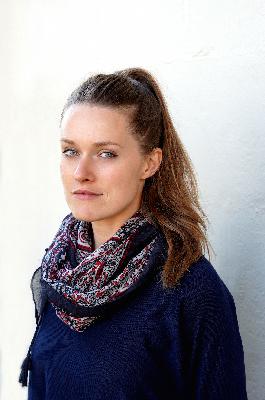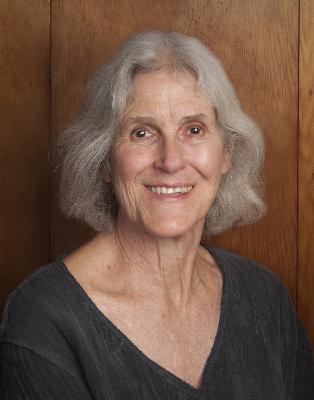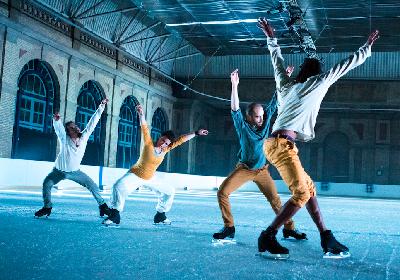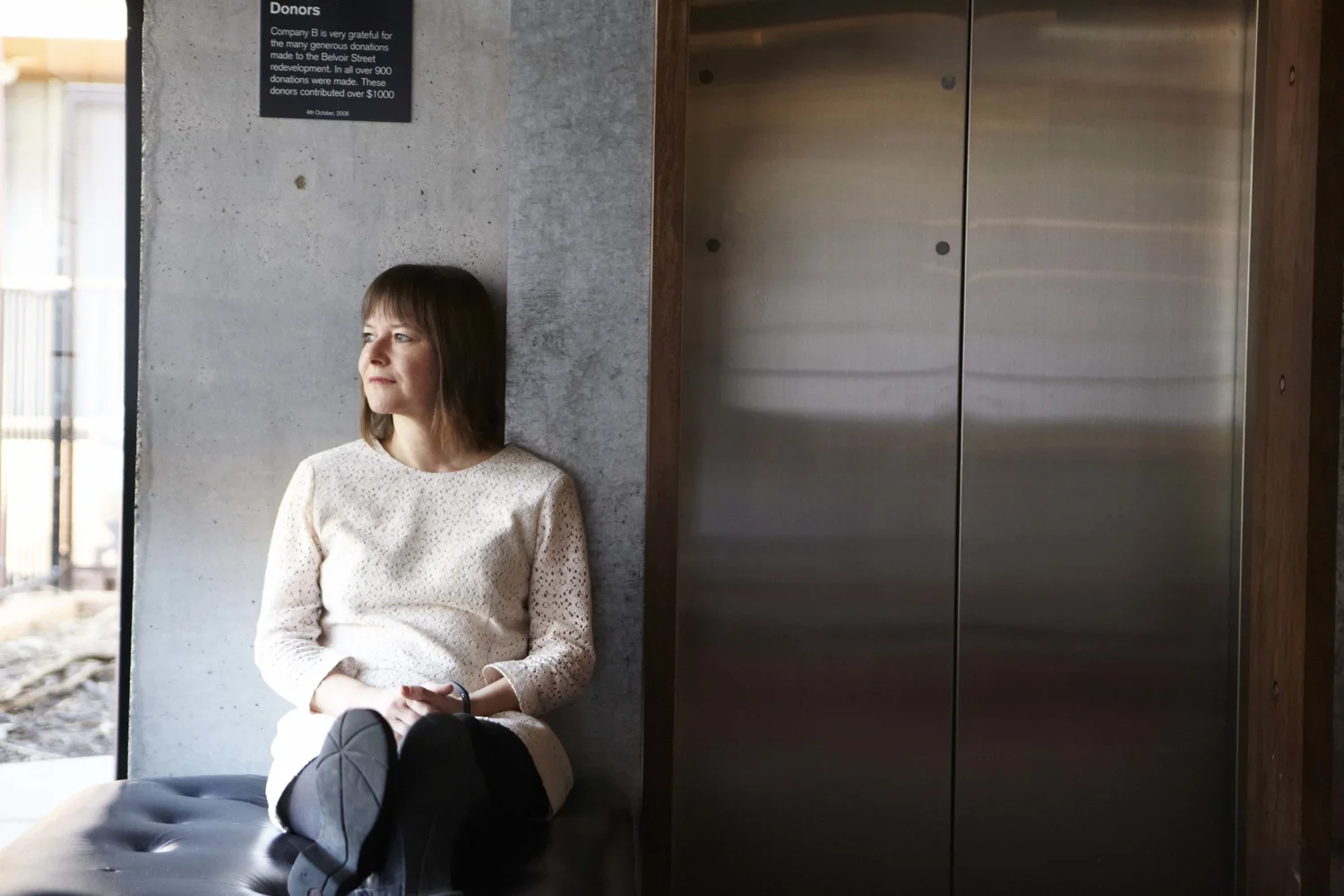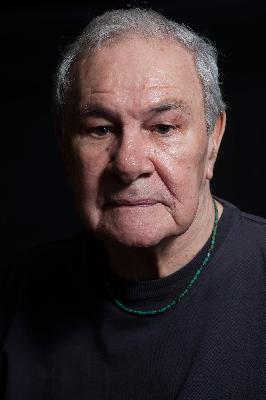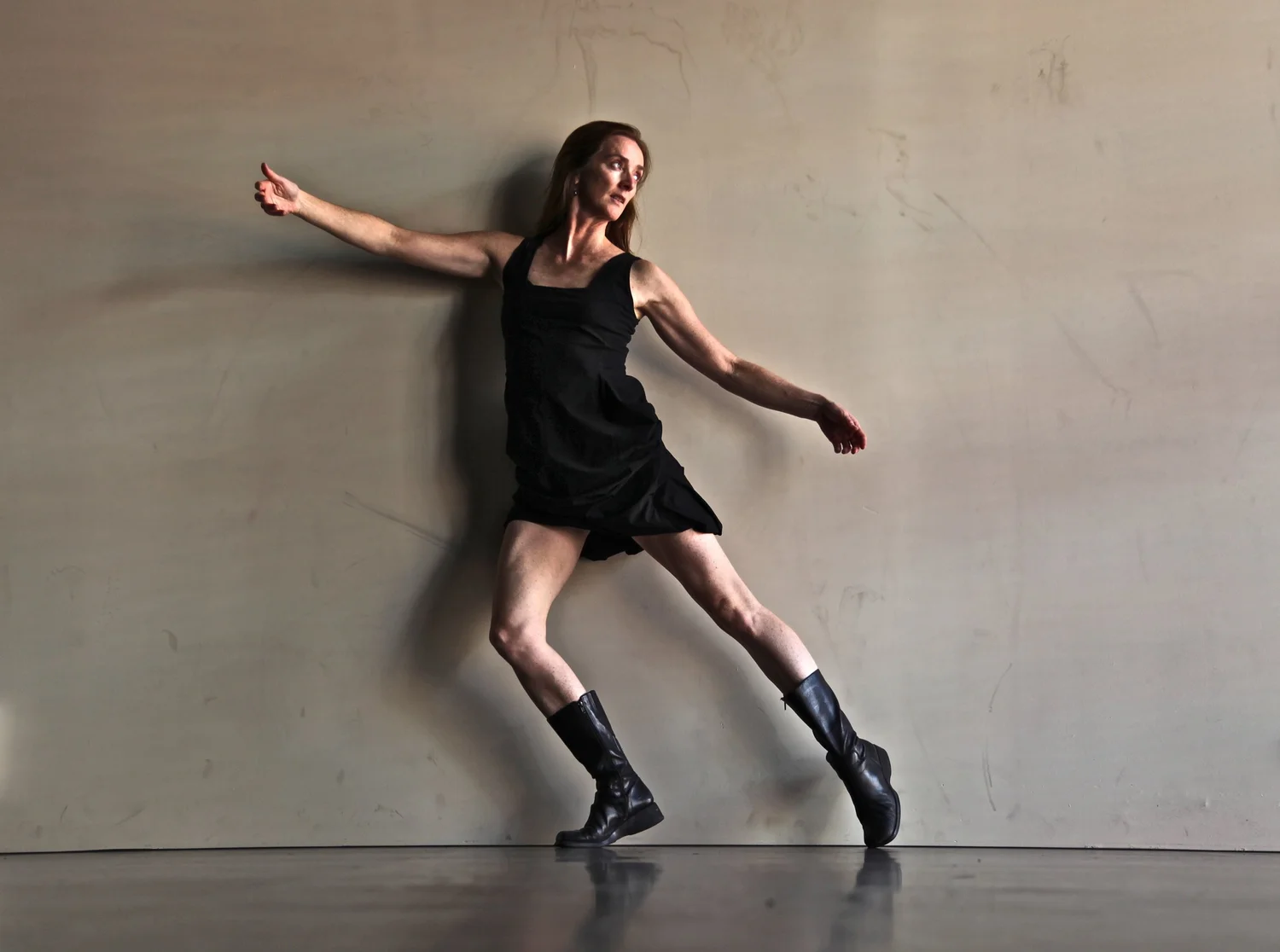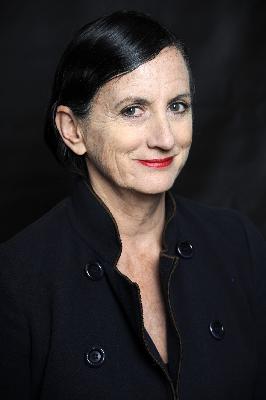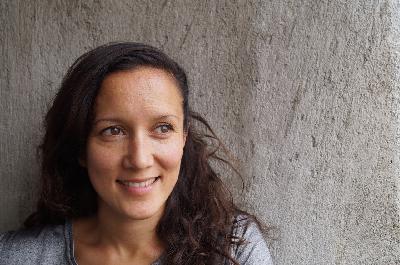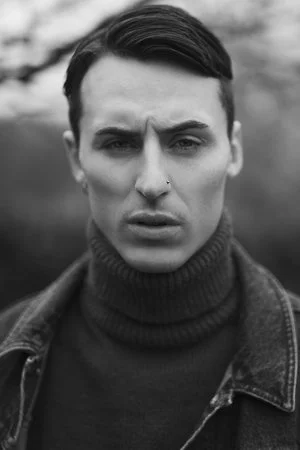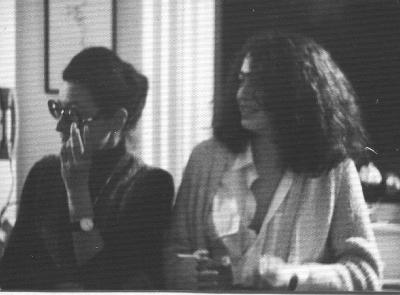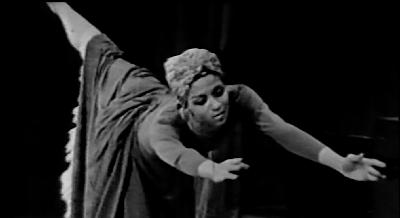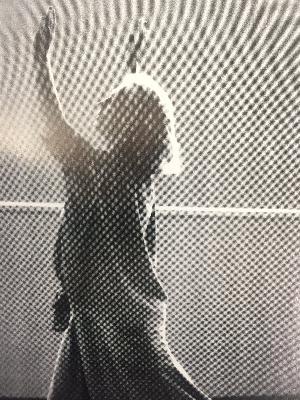Discover Delving into Dance
Delving into Dance

Delving into Dance
Author: Andrew Westle
Subscribed: 19Played: 75Subscribe
Share
© A. Westle
Description
Delving into Dance is a podcast of conversations with dance makers and lovers, sharing interviews that are both intimate and thought provoking. Through a diversity of views, experiences and practices, we can better understand the role dance plays in individuals’ lives, while demystifying and opening dance up to new audiences. What can those who don’t regularly engage with dance learn from the artform? Delving into Dance is a passion project of researcher and dance-lover Andrew Westle. Andrew is not a dancer, instead he brings his unique perspective and passion for the art-form.
70 Episodes
Reverse
In this first episode we meet Michael J Morris, who was visiting Australia for the PSI conference. This wide-ranging discussion took place in a corridor at Melbourne University where we discussed ecosexuality, dance research, gender and all in between.
Morris’ dance practices and interests are broad from Butoh to Burlesque, often concerned with destabilising normative gender and sexuality categories.
Their experience in dance reveals there are multiple pathways to making a career in dance. As Morris explained “there are people who are fed from the experience on stage and others find it draining.”
Morris’ PhD explored ecosexuality based partially on interviews with activists/artists Elizabeth Stephens and Annie Sprinkle. Morris is currently an Associate Professor of Dance at Denison University, where they teach Queer, Women’s and Gender Studies.
Morris has an amazing blog full of musings and writing, which you should check out; you can also follow them on twitter
If you have enjoyed this discussion share it with a friend. Stay tuned for another stimulating episode. We will be hitting the web in two weeks time as we continue to explore the world of dance, with interviews from Deborah Jowett, Gideon Obarzanek, Stephanie Lake, Rafael Bonachela and many more.
“Even our most mundane sexual practices have an ecological impact”
Those familiar with Melbourne’s independent dance scene will know Stephanie Lake. A dancer and choreographer, Lake’s CV has a long list of credits including Chunky Move and Lucy Guerin Inc. She started dance reasonably late for a woman, and forged a career through her unique physical style. Lake said:
“My hair would never go neatly into a bun … I didn’t know any of the ballet language… I think that it can actually be a positive, because you want individual voices in the arts.”
Lake continues to push expectations of the form and is known for physically demanding choreography.
She was awarded the Australian Dance Award in 2014 for Outstanding Achievement in Choreography, and the Helpmann Award for Best Choreography in Dance or Physical Theatre Work 2014 for A Small Prometheus. Mix Tape (2010) received the Green Room award for Best Choreography.
Her work has toured to Germany, France, Ireland, Denmark, Singapore and Australia with a range of work including : Mix Tape; AORTA; Dual; Double Blind and If I Was.
She now spends the majority of her time as a choreographer and a mother of two children, but is still dancing and continually finding a balancing between all of her passions and the responsibilities of motherhood.
Lake has been commissioned by Sydney Dance Company, Chunky Move, Dance North, Tasdance, Stompin, Sydney Symphony Orchestra and Frontier Danceland (Singapore).
We met in the noisy foyer of the Malthouse early on a cold Melbourne morning, before she was starting a new development, in the pipeline for 2017. Our conversation moved from discussions of process, motivation, goals and children. We started talking about moving from a career primarily dancing to one of choreography.
Stephanie Lake early in to her choreographic career is set to make her mark as a prominent Australian choreographer.
If you have enjoyed this discussion share it with a friend. Stay tuned for another stimulating episode. We will be hitting the web in two weeks time as we continue to explore the world of dance, with interviews from Deborah Jowett, Joshua Pether, Gideon Obarzanek and Rafael Bonachela in the pipeline.
“I get so nervous going in to rehearsal … I have these fantasies about jobs where you are not witnessed”
Deborah Jowitt is one of the most accessible dance critics, spending her life capturing the diversity of dance in her reviews, particularly in New York City. Jowitt’s work focuses equally on ballet and modern dance with a love for both styles.
I believe Jowitt’s experience as a dancer and choreographer helps in her translation of what is seen in the theatre to what is seen on the page. Jowitt wrote for the Village Voice between 1967 and 2011, has written for The New York Times, Dance Research Journal, and Ballet Review among others. Her reviews form a powerful set of literature, with a sense of poetry and movement that is captured in her writing. Jowitt continues to review for the pure love and joy of the practice of criticism. Her work can be found here.
Jowitt has written a series of four books, with her latest which focuses on the life and work of Jerome Robbins; Jerome Robbins: His Life, His Theater, His Dance published in August of 2004 by Simon and Schuster. In the interview Jowitt discusses her latest book projects, documenting the life of Martha Graham. She said of her husband: “He is worried I won’t finish the book before I die”.
Jowitt remains one of the most influential voice of dance, with a legacy that will continue for generations to come. Jowitt taught in the Tisch School of the Arts from 1975-2015.
Jowitt was brought over to Australia, by Dancehouse, Melbourne as part of the Keir Choreographic Awards. I took the opportunity to speak to Jowitt in her hotel room, right next to a noisy construction site. Totally in awe of Jowitt and the impact that she has made on dance, I was speechless for most of the interview, but we talked about everything from the importance of criticism, the changes in dance in New York, the impact of the AIDS epidemic on dance, the gentrification of New York, Bangarra Dance Theatre, Pina Bausch’s influence on dance, gender equity and a whole range of other topics.
Rafael Bonachela moved to Australia in 2009 to be the Artistic Director at Sydney Dance Company. He followed Graeme Murphy, who had been at the helm for decades, and took up the role after the tragic death of Tanja Liedtke, who was named as Murphy’s successor. Since his appointment, Rafael has brought the works of a diverse range of leading choreographers to Australia including Alexander Ekman, Adam Linder, William Forsythe, Jacopo Godani and Kenneth Kvarnstrom. While programing the works of Australian choreographers including Larissa McGowan, Stephanie Lake and Gideon Obarzanek.
Rafael works with a range of collaborators including with Toni Maticevski, Sarah Blasko, Nick Wales and Katie Noonan. His works includeg 360° C (2008), We Unfold (2009), 6 Breaths (2010), Shared Frequencies (2011), 2 One Another (2012), Les Illuminations (2013), and Lux Tenebris (2016).
Rafael has helped instigate a Pre-Professional Year for early-career dancers, as well as focusing on school students to help to develop the next generation of contemporary dance audiences.
Before moving to Sydney he ran his own company, the Bonachela Dance Company. Rafael danced for the Rambert Dance Company in 1992, where he developed a strong interest in choreography. This work lead to him choreographing for Kylie Minogue, on the Fever and Showgirl tours.
In this conversation we discussed Kylie, dance, leadership, inspiration and arts funding.
More information on Sydney Dance Company can be found at www.sydneydancecompany.com Rafael is his own social media celebrity and can be found on Twitter and Instagram.
Stay tuned for upcoming episodes including interviews with Gideon Obarzanek and Alexandre Hamel from Le Patin Libre.
Gideon Obarzanek is best known for establishing Chunky Move in 1995 in Sydney, subsequently moving to Melbourne in 1997 after winning a tender from the Kennett State Government. Obarzanek hoped that Chunky Move would last at least a year in Melbourne, “so it wouldn’t be so embarrassing”. His desire was to create a space for dancers and choreographers to apply for funding and make work at a time when independent dance was very fringe.
“I didn’t have a great interest in having a dance company or directing a dance company, it came out of necessity. […] My interest has always been about making work.”
Obarzanek remained the artistic director of Chunky Move until 2012.
Obarzanek’s work is diverse, with a focus on collaborations, technology, large-scale events, film and site specific works. His work has toured Europe, Asia, U.K., USA and South America. He has been presented at the Joyce Theatre, BAM Next Wave Festival NY, Dance Theatre Workshop, Venice Biennale, Territoria Festival Moscow as well as all of Australia’s major performing arts festivals. Obarzanek has choreographed works for Australian Ballet, Sydney Dance Company, Dance North, Queensland Ballet, Netherlands Dance Theatre and Opera Australia.
Obarzanek has a long list of awards to his name, including winning the prestigious Bessie Award with Lucy Guerin and Michael Kantor for Tense Dave (2005) and Helpmann Awards for Glow and Mortal Engine (2008),
Since leaving Chunky Move Obarzanek wrote and directed his first play ‘I Want to Dance Better at Parties’ for Sydney Theatre Company, followed by the screen version in 2013. Obarzanek is currently the Chair of the Melbourne Fringe Festival and an Artistic Associate for Melbourne Festival.
In this conversation we discussed dance leadership, gender, inspiration, arts funding, the future of festivals and the vision of Melbourne for being a creative hub.
Stay tuned for upcoming episodes including interviews with Alexandre Hamel from Le Patin Libre.
Alexandre Hamel established the world’s first contemporary ice-skating collective, Montreal-based Le Patin Libre, in 2005. Attracting rebel skaters that turn their back on the world of figure skating or more conventional opportunities for skate performance, Le Patin Libre seeks to reinvent what is possible on ice.
Using the skates to create brand new movements which are explained as “grounded flight”, the gliding motion as well as the sound of the skates opens new possibilities for movement and dance. But can Le Patin Libre be described as a dance company? It is Hamel’s view that:
“Branding it as contemporary dance is bad for marketing. Contemporary dance is often seen as elitist, boring […] for snobs by a very large section of the public.”
This is a company that defies traditional categories. Conventions do not dictate Le Patin Libre, who have established and fostered their own audiences and styles of movements. They explain their work as contemporary skating. The sound of the ice, the feel of the ice, the setting of performance as well as the different capacity that skating provides the company, are all captured in their work.
Alexandre’s passion for his work and company is incredible and is captured throughout the interview. His advice for young dancers is: “get out of universities, just dance.” This is an artistic leader that has passion to pursue his own path and make his own rules. A rebel with a cause!
Our conversation covered everything from gender and ice skating, adrenalin, aspects of glide, engaging audiences, what is next and what it has taken to get the company off the ground and out into the world. Apologies for the potential mispronunciation of Le Patin Libre, French is not my strong point 🙂
You can follow Hamel on twitter @Alexandre_Hamel and the company @lepatinlibre. Like on Facebook. Watch some of there amazing work for yourself, join their newsletter and check out Le Patin Libre website.
This is the last episode of season one. What started as a pilot has actually gone pretty crazy, with the previous episodes reaching thousands of people. Planning for season two has already commenced, where I will be investing more money to improve the quality of the recordings and make a few other changes. Until then stay tuned on twitter and revisit all the other episodes with: Gideon Obarzanek, Deborah Jowitt, Michael J Morris, Rafael Bonachela and Stephanie Lake.
In this first episode of season two, we get acquainted with Anouk van Dijk, the Artistic Director of Melbourne based Chunky Move. Anouk originates from Holland, where she started to seriously pursue dance in her late teens, after watching a dancer called Ian- a man she has never met or seen since. Watching Ian move across the space was captivating:
“I will never forget…Ian filled the room. He filled the room with energy, with his passion, with his power. That was it. I was sold […] I wanted to be a dancer”.
As a dancer, Anouk danced for Werkcentrum Dans, the Nieuwe Dansgroep, the Rotterdance Dance Company and Amanda Miller’s Pretty Ugly Dance Company.
In 1998, Anouk formed her own company, anoukvandijk dc, based in Amsterdam. The company toured extensively including performing at Festival d’Avignon, MASS MoCA, Dance Triennale Tokyo, American Dance Festival and Festival TransAmériques. It also toured to Australia, performing at Adelaide Festival, Sydney Opera House and Perth International Arts Festival, but never to Melbourne, a place Anouk would later call home.
After Chunky Move founder Gideon Obarzanek (interviewed in season one) stepped down in 2012, Anouk was offered the job of taking Chunky Move into their next chapter. Anouk certainly had no small task ahead of her, replacing someone held in such high regard. However, since her appointment, Anouk has done just that, creating her own diverse range of works for the company, with themes around identity and place and has solidified her place in landscape of Australian dance. Australia has become home!
Works Anouk has created for Chunky Move
• An Act of Now
• 247 Days
• Embodiment 1:1:1
• gentle is the power
• Complexity of Belonging
• Depth of Field
• Rule of Thirds
• L U C I D
Anouk was rehearsing for the upcoming show ANTI—GRAVITY when we recorded this interview. ANTI—GRAVITY is an Asia TOPA Commission that will be premiered as part of Dance Massive 2017. A collaboration with multimedia artist Ho Tzu Nyen, ANTI—GRAVITY is an exploration of clouds:
“the yearning for this lightness….not being earth bound, completely”.
The conversation covered everything from: the process of making a work, collaborations, clouds, home, inspiration and Countertechnique (a system that helps dancers throughout their careers).
Lucy Guerin is one of the powerhouses of Australian Contemporary dance, known for her work in Australia and abroad. An Adelaide native, Lucy fell in love with contemporary dance and pursued this love to New York in 1989, dancing there for seven years. During this time, she worked with leading dance mentors including Bebe Miller, Tere O’Connor and Sara Rudner.
In 2002, Lucy Guerin Inc was established in Melbourne, providing a space for exploring and expanding upon ideas about contemporary dance. Through its noted Pieces for Small Spaces & First Run programs, the company have provided a platform for emerging choreographers to experiment and explore choreographic approaches.
Lucy has increasingly been working across forms, working in the UK with Carrie Cracknell first on Medea (2014) and then Macbeth (2015). Following the success of Macbeth, Lucy was commissioned by Rambert to make the work Tomorrow.
“I like working with the dancers, I like working on the detail of the choreography and the structure of the work.”
In terms of acclaim across her career, Lucy won the prestigious Bessie Award for her work Two Lies in 1996 and later in 2005, for outstanding choreography and creation for Chunky Move’s production of Tense Dave, with Gideon Obarzanek and Michael Kantor.
A selection of works:
Two Lies (1996)
Heavy (1998)
The Ends of Things (2000)
Living with Surfaces (2001)
Melt (2002)
Tell Me (2003) with Michael Lenz
Tense Dave (2003) with Gideon Obarzanek and Michael Kantor
The Firebird (2003)
Baroque Masterworks for the Australian Opera (2004)
Aether (2005)
Structure and Sadness (2006)
Corridor (2008)
Untrained (2009)
Human Interest Story (2010)
Conversation Piece (2012)
Weather (2012)
Motion Picture (2015)
Macbeth with Carrie Cracknell for Young Vic (2016)
Tomorrow (2016)
Dark Chorus (2016)
Attractor (2017) with Gideon Obarzanek & music duo Senyawa for Dance North
Split (2017)
I spoke with Lucy before going into rehearsal for Split, recently opened as part of Dance Massive, and in the same week Lucy travelled to her hometown Adelaide with Attractor. This conversation covers everything from current works, working with actors, dance and gender, Australian dance identity, and Lucy’s journey in contemporary dance.
“It’s very exposing when you first have an audience.”
Daniel Jaber started ballet when he was aged four, when he attended dance classes with his sister. He recounts seeing In The Middle, Somewhat Elevated, a work by William Forsythe, as a child and it was in this moment that he knew he wanted to become a professional dancer. At 15, Daniel started studying at Queensland University of Technology, obsessed with movement and dance:
“Movement gave me a greater sense of freedom and expression.”
Daniel recounts Australian Dance Theatre (ADT) work Bird Brain and being blown away by the performance of Tanja Liedtke. He loved the work of ADT’s artistic director Garry Stewart due to his ballistic choreography and “savage use of classicism”. In 2003, Daniel started working full time for ADT. He ended up dancing Liedtke part:
“I still consider that one of my life’s blessings.”
Daniel has danced throughout Australia, Asia, US, Europe and the UK. He has worked with Phillip Adams BalletLab, Joachim Schloemer, Frances d’Ath, Philip Fabre, Clint Lutes, Alison Currie, Gabrielle Nankivell and Ross Ganf.
In 2014, Daniel was appointed the Artistic Director of Leigh Warren and Dancers (LWD). A position he only held for a year, before leaving to pursuing more lucrative opportunities overseas. Since then, he has been working extensively in LA, working on the hit television show Dance Moms as Ballet Master and Choreographer. He also created a work called StarDancer for the largest water screen in the world, in Dubai.
Daniel is also devoted to teaching the next generation of dancers. He runs classes and workshops at different studios, including Transit Dance in Melbourne. His aim is to give young dancers the confidence and skills to pursue a careers in dance. His advice to young dancers being:
“Complacency will kill the opportunity to make it in this industry.”
I first came across the incredible Noel Tovey in 2009 a friend and I saw Little Black Bastard, his solo show. It was such a brave performance and Noel exuded such grace and humility. But what we were blown away by was his story of survival. His life started in neglect and poverty, he endured frightening amounts of sexual abuse and now had an incredibly successful career as a dancer, choreographer, actor and director.
Noel Tovey’s life has been utterly extraordinary. Living as a street kid and rent boy in Melbourne during the 1940 and 50s, he was sent to Pentridge Gaol in 1951, when he was 17, after pleading not guilty to the crime of buggery. It was only in 2016 that the Victoria State Government apologised to men like Noel, men who were incarcerated and persecuted as a result of unjust laws that marked homosexuality as criminal. Noel was an important advocate in the campaign that lead to the apology, and he was present for the apology.
Noel’s interest and passion in the performing arts took him from Melbourne to London and across Europe to New York. He started ballet classes with the famous Madame Borovansky, where he cleaned the studios in exchange for classes. He started his professional dance career in 1954 with Paint Your Wagon at Her Majesty’s Theatre, Melbourne. Replacing a boy who broke his leg in rehearsal, Noel become the first Indigenous male ballet dancer in Australia.
After several years working in Australia, Noel left for the footlights of London. Noel made his acting debut in the West End production Oh Dad Poor Dad with legendary American actress Stella Adler in 1961. He became a principal dancer with The Sadler’s Wells Company. His choreographic career started in 1966 with a production of Sandy Wilson’s The Boyfriend.
During the premier season of Oh! Calcutta, Noel met his long term partner David (Dave) Sarel. Together they opened L’Odeon, an art gallery specialising in 20th century decorative art. Noel lost Dave to AIDS in February 1986. After which time Noel devoted himself to fighting against the myths related to HIV/AIDS and to helping increase education about the disease by working with AIDS Trust in London.
Noel moved back to Australia in 1991and continued working in the performing arts including directing A Midsummer Night’s Dream with an all Indigenous cast for the first Olympic Festival at Sydney Theatre Company; Spirit Time and Place, Adelaide Festival; Sky Light, Darwin Festival; The Aboriginal Protesters, Sydney, Munich and The Weimar festivals; The Stars Come Out, Sydney Mardi Gras Festival. His one man play Little Black Bastard based on his autobiography of the same title, has been performed around the world including La Mama Melbourne, Darwin Arts Festival, Belvoir Street Sydney, Perth International Arts Festival, The Herald Theatre Auckland, Edinburgh Fringe Festival and Origins Festival London.
In 2010, Noel received the ALSO Foundation Lifetime Achievement Award. In 2014, he was awarded the Uncle Bob Maza Memorial Lifetime Achievement Award for outstanding contribution to Victorian Indigenous theatre. And in 2015, he was made a member of the Order of Australia.
Noel has set up scholarships for two recipients from socially disadvantaged backgrounds to attend the Flying Fruit Fly Circus School.
Noel is a man of many talents and I can strongly recommended his two books, Little Black Bastard, published in 2004 & And Then I Found Me, published in March 2017.
This interviews covers a look at Melbourne in 1940 and 50s, Noel’s professional career, his latest book, the AIDS epidemic and his being at the Stonewall Riots. This wide-ranging conversation contains adult content, listener discretion advised.
If you enjoyed this interview, please share Noel’s incredible story on social media. Stay tuned for another stimulating episode, hitting the web in two weeks. Check out previous interviews from Deborah Jowett, Gideon Obarzanek, Rafael Bonachela, Lucy Guerin & Anouk van Dijk. You can now find Delving into Dance on Facebook, as well as Twitter and iTunes.
New Zealand-born Sue Healey, left Auckland to study dance at the Victorian College of the Arts. Sue is a performer, choreographer and educator. She has particular expertise in making dance for film. Sue’s practice extends beyond traditional performance venues, with her projects appearing in galleries, outdoors and most recently in a film work presented at train station.
“A sense of place is critical to all my works”
Her work has toured throughout USA, UK, Australia, New Zealand and Asia.
Sue went back to study, completing a Masters Degree in Choreography (2000) from Melbourne University. Sue was the recipient of the Choreographic Fellowship from the Australia Council in 1999/2000 and the Creative Fellowship in 2013-14 from the Australia Council. Sue’s is an Honorary Fellow of the Victorian College of the Arts, University of Melbourne.
Sue has made a number of films including Virtuosi a feature-length documentary that details the experiences of New Zealand dancers and choreographers that left New Zealand to pursue opportunities around the globe. The film has screened in New York, Montreal, Amsterdam, Prague, Portugal, Berlin, Hobart, Auckland and Wellington. Virtuosi won the Australian Dance Award for Outstanding Achievement in Dance on Film in 2013. For Sue editing film is a form of choreography. Another fascinating documentary Sue has created is The Golds, which features a dance company of over 60 year old’s. Sue’s work En Route was recently presented on a 23 meter wide screen at Wynyard train station (Sydney), 30 000 people passed the screen everyday. The film captured a wide diversity of individuals and ages, including 102 year old Eileen Kramer and Elizabeth Cameron Dalman aged 82, recognised as the founder of Modern Dance in Australia and the founder of the Australian Dance Theatre.
Sue is passionate about dance believing that movement is central to human expression.
“I find myself saying to someone who knows nothing about dance that the value of dance is that it is utterly human, it is vital human research, that we undertake through movement. Without movement we are nothing, we are dead. Life is movement and our species communicates through movement.”
Find out more:
• The Niche Series | 2002 – 2004
• In Time series | 2005-07
• The Curiosities Series | 2008-12
• On View series | 2013 – present
Further reading:
• Scanline details and links
• RealTime Arts
In this conversation we discussed: making dance for film, the value of dance, life as a freelance artist, dance education and dance being accessible.
If you enjoyed this interview, please share Sue’s interview on social media (there is zero budget for this podcast so your support is incredibly valuable). Stay tuned for another stimulating episode, hitting the web in two weeks. Check out previous interviews from Deborah Jowett, Gideon Obarzanek, Rafael Bonachela, Lucy Guerin & Anouk van Dijk. You can now find Delving into Dance on Facebook, as well as Twitter and iTunes. Stay tuned for the next episode with phenomenal Meryl Tankard.
Meryl Tankard is a powerhouse of Australian dance. She learnt ballet the 1960s and 70s when training was grueling with the discipline expected of the teachers was close to torture. She remembers seeing a teacher pushing a little girl’s head in to a bucket of water until she was forced smiled.
She compares dance discipline to that of the military – her father served in air force in the Second World War.
Born in Darwin, she lived in Melbourne, Newcastle and Penang and her childhood has inspired many of her works, including Two Feet.
Meryl’s professional dancing career started with The Australian Ballet in 1975, but her time in the world of ballet was short lived. In 1978 Meryl moved to Germany to work with Pina Bausch at Tanztheater Wuppertal . Meryl says she blew in from Australia “red lips, red nails”, it was the 70s after all, employed on a soloist contact to the surprise of many. Soon after, she was performing in one of Bausch’s most revered works Café Müller and became one of Pina Bausch’s most recognised dancers. Bausch described her style:
“There was a tension between her fragility and her courage. Meryl had and understanding of measure, of boundaries; this instinct and experience gave her that edge.”
When starting at the company, audiences didn’t understand Bausch’s style. “People were booing, we sometimes only had 30 people in the audiences”. Bausch “wanted everything” Meryl explains: “She was stubborn and very vague”.
Meryl came back to Australia in 1984 because she was home sick and missed the sky. During the 1980s she started to make her mark on the Australian dance scene. In 1989, she took on a small company in Canberra and called it the Meryl Tankard Company. Her work was almost a hybrid between dance and theatre a style that divided audience and critics. They were truly incredible shows.
In 1993, Meryl took on the artistic directorship of the Australian Dance Theatre (ADT), in Adelaide. Her period at the company helped to put Australian contemporary dance on the world stage. Robyn Archer has described this as an amazing time for Adelaide: “It was new and exciting, it was risky and it was courageous”.
Meryl time at ADT was cut short with the board terminating her contract in 1999. The industry was in shock; how could the board be so short sighted when ADT was at the height of such phenomenal success. Where there elements of sexism involved? Meryl explains in regards to gender and dance:
“We have this fake idea that dance is a very feminine art form, it is only because we see the women busting their guts on the stage.”
Meryl continued choreographing and her worked ranged from the Sydney Olympic Opening Ceremony to Disney’s Tarzan. And her work The Oracle, set to Stravinsky’s “Rite of Spring”, with dancer Paul White was a triumph.
Meryl re-defines the boundaries and is increasingly turning to film. Her film Michelle’s Story is a moving portrait of her friend Michelle Ryan, who was a dance for Meryl Tankard’s Australian Dance Theatre and was later diagnosed with MS.
This was an interview where I was left constantly saying “wow”. Because WOW what an amazing creative woman. Meryl Tankard is truly incredible! This conversation covers includes managing boards, gender and dance; Pina Bausch; making dance for film; and so much else in between. It was recorded on Anzac Day in a quiet spot in the park (until all the children came to play around us).
“People say to me, ‘are you still dancing’, and I go ‘well what is dancing? What does dancing mean, I go in to the studio and put music on?’ Maybe I dance when I play with my niece. […] we are sort of dancing every day aren’t we?”
This is the last episode of season two. I am overwhelmed by the reception of this podcast with absolutely zero budget; there are thousands of people listening. Season three is already in production with three episodes already recorded. Stay tuned. If you want to help spread the word, please share these episodes with your networks. Thanks for listening.
Thomas Fonua is a proud man of Samoan/Tongan descent. Born in New Zealand, Thomas started to dance at the age of seven. His mum saw that he loved to move but showed no interest in sport, so she enrolled him in dance instead.
“My work is influenced by my heritage”
At the young age of 16, Thomas was offered a two-year apprenticeship with Black Grace, based in Auckland. There are few professional dance opportunities in New Zealand, so gaining full-time employment was a true honour and was the start of a solid, successful career for the young dancer.
Thomas was the youngest dancer in the company, with a 10-year age gap between him and the next youngest dancers. This was a significant period of growth and cemented his passion for dance. During this time Thomas toured numerous works through Europe, Asia, North America and Canada as one of the company’s leading dancers.
In 2010, Thomas was invited to participate in The Banff Centre’s Indigenous Dance Residency. Thomas participated in the program for many years before being invited to take up a position as a faculty member. As a faculty member, he helps by working with and mentoring Indigenous dancers from all over the world.
Thomas has since worked for Red Sky Performance in Canada, where he is an associate artist. He has worked on productions including Migration (2011) and inSIGNia (2013). Thomas has also worked with artists including Sandra Laronde, Neil Ieremia, Rafael Bonachela, Sidi Larbi Cherkaoui, Jock Soto, Douglas Wright, Raewyn Hill, Ross McCormack and Garry Stewart.
Thomas joined Australian Dance Theatre (ADT) in 2015. Subsequently, he has performed in works including Proximity, Be Your Self, Doppelganger and Habitus. He has also had his work MALAGA programmed as part of ADT’s Ignition program, which seeks to foster the next generation of choreographers.
His work MALAGA explored the dark past of human zoos or ‘Volkershau’, in which individuals were brought in from colonial frontiers, for European audiences. This work drew upon ideas of exhibition, captivity and exoticism.
I spoke to Thomas, in the lead up for a performance of Be Your Self, soon to open in Melbourne, the first time it will be performed in the Victorian capital.
Be Your Self is a significant work for Thomas, being the first work he danced in for ADT as a guest artist during the work’s 2014 tour of Indonesia. Be Your Self is also one of his favourite pieces to perform: “Because it is so much fun”
Be Your Self was created by Garry Stewart, and examines how the body is central to our identity and that our notion of the ‘self’ is indeed located in our bodies.
Thomas is a fascinating and passionate dancer who will continue to bring more to the world of contemporary dance. This interview is a wide ranging discussion, which includes everything from RuPaul – “the unsung hero” – to studying business, performing in drag and what it means to be an Indigenous dancer, to preparing for performances and how Thomas aims for the future.
You can find out more about Thomas Fonua on the ADT website.
Check out the fabulous archive of dance makers and leaders including: Meryl Tankard, Daniel Jaber & Gideon Obarzanek
And stay tuned for future episodes in this season, focussing on the experience of those currently who are dancing. This season will capture a true diversity of experiences, including Samantha Hines (ex ADT dancer, subsequently working with Dancenorth and Stephanie Lake), Melanie Lane (choreographer and performer based between Berlin and Melbourne) and Gareth Chambers (Cardiff-based Visual Dance artist recently in Australia for YIRRAMBOI festival)
If you have enjoyed this episode please consider leaving a donation. Contributions keep this little project going strong, and are the only source of funding for this project. A big thank you to Stephanie Lake whose donation helped fund this episode! You can listen to the wonderful Stephanie Lake’s interview from Season One.
Melanie Lane is emerging as a powerhouse of contemporary dance. Based between Melbourne and Berlin, Melanie’s work is diverse and exciting.
After studying at Western Australian Academy of Performing Arts in 1999, Melanie moved to Germany as there were increased performance opportunities available in Australia.
Melanie has performed with a range of companies and artists worldwide, including Lucy Guerin Inc (interviewed in season two), Kobalt Works, Arco Renz (B), Club Guy and Roni (N), Tino Seghal (G), Antony Hamilton (AUS) and Chunky Move (Aus).
Melanie was appointed as resident director at Lucy Guerin Inc, in 2015. In 2016, she was commissioned to develop Re-make at Chunky Move part of their Next Move program and has just been announced as one of the commissioned artists for Sydney Dance Company’s New Breed program.
I met Melanie after a long day in the rehearsal room, in the lead up to her premiere of Nightdance which explores the night economy; from exotic dance, lap-dancing and club dancing, to examining how complicit the audiences are as voyeurs and consumers.
Gareth Chambers is a proud Welshman based in Cardiff. He works as a choreographer, dancer and writer. His work is visceral, with a strong queer aesthetic that questions the ways in which bodies function in society, intersecting with gender, sexuality and class. Gareth calls his work ‘Visual Dance’. His work often sits neatly in a live art category, sitting well outside of a traditional theatre space, like in nightclubs and warehouses.
Gareth studied at Laban Centre, London. He has worked with Doris Ulrich, Tactile Bosch, Eddie Ladd, Marc Rees, Luke Pell, Cai Tomos, Ema Jayne Park, Siriol Joyner, Joon Dance and Wendy Houstoun. Work has been shown in Cardiff, Swansea, London and Berlin.
Gareth was awarded DanceWeb Scholarship to attend ImpluzTanz in Vienna. He recently concluded this intensive where he studied under Doris Ulrich, Ivo Dimchev Keith Hennessy, Eroca Nichols, Libby Farr, Risa Steinberg ,Salim Gauwloos and Guy Cools.
This year he was also one of the international artists at YIRRAMBOI First Nations Arts Festival in Melbourne. Gareth presented his work, Llaeth, which (is one difficult for an Australian to pronouns- see podcast). This work explores the idea of taboo around mother’s milk, ideas of masculine and feminine, alongside identity and self. Gareth also writes and edits for online dance magazine BELLYFLOP.
This was a warm and authentic interview, which covered so much territory, from Queer art politics, dance and desire, goals and ambitions, through to ways of making dance work.
If you have enjoyed this episode and you want to continue to hear a diversity of dancers and dance makers experiences, leave a contribution. With arts journalism around the world in decline, now more than ever, platforms like Delving into Dance are critical in providing artists a space to talk about their work to a dedicated audience, while also archiving their experiences.
Samantha Hines studied at New Zealand School of Dance in 2010, before landing her dream job at the Australian Dance Theatre (ADT) in 2012: “It was my dream”. She travelled extensively with ADT with works including G, Proximity, Multiverse and Be Your Self. She was part of the company’s ensemble when they won the Green Room Award for Best Performance by an Ensemble for Proximity in 2013. Samantha was part of the world premiere season of Naught in 2013, choreographed by Daniel Jaber.
Since leaving ADT Samantha has had a busy time as a freelancer working on a range of projects including with Stephanie Lake on Pile of Bones. Samantha started 2017 with an amazing performance in Attractor choreographed by Lucy Guerin & Gideon Obarzanek with Dancenorth. For Attractor, Samantha was nominated for the Helpmann award for the ‘Best Female Dancer in a Ballet, Dance or Physical Theatre Production’. Attractor took out the Helpmann award for ‘Best Choreography in a Ballet, Dance or Physical Theatre Production.’
She has recently joined the Dancenorth ensemble, she is loving Townsville and being a part of Dancenorth: “It’s a really nice environment”. She is currently working on a range of works including the upcoming Brisbane Festival season of Attractor.
Samantha has a warm and attractive personality that complements her unique and fabulous dance style. She explains: “the weirder you are the more unique you move, the more you are going to get hired for that role”
Joshua Pether is a Perth based dancer, who frequently travels to the East Coast to perform and develop performances.
A descendant of the Kalkadoon people, Joshua grew up in in Mt Isa, spending many years living on an enormous cattle station. He started dance at a young age but gave it up as a teenager, shifting gears and training as a pharmacist. However, like any passion, eventually Joshua rediscovered and reconnected with dance later.
Joshua also identifies as a dancer with a disability. This has led him to reconsider dance and the ways in which the form can be more inclusive of differences. Increasingly becoming an activist, challenging others preconceptions and proving opportunities for those that are often excluded.
I spoke to Joshua after the premiere season of his fascinating solo work Monster, programed as part of Yirramboi Festival. Part dance part live art, this was a dark work that moved between a deeply personal mental state, something that sits below the surface, to an exorcism and release. There is always something refreshing about seeing dance that is prepared to move into the unknown, and deal with dark subject matter.
This interview is with Shelley Lasica, daughter of pioneering Melbourne dance choreographer and teacher, Margaret Lasica (1926-1993). Shelley herself is an amazing contributor to the performing arts scene as a successful choreographer and performer.
Born in Vienna, Margret migrated to Australia with her family in 1939. During the 1940s, Margaret studied with Ruth Bergner. Bergner’s work had a political and social undercurrent, drawing upon European and Jewish dance traditions to create modern dance performances. Margret drew influence from Bergner’s work.
In 1967, she founded the Modern Dance Ensemble (MDE). MDE performed up until 1981 and then intermittently until 1990. Margret is noted in history as a dancer, choreographer and teacher. Her teaching was exceptional and she fostered a range of incredible talent. Margret was a significant influence on Lloyd Newson, who went on to establish DV8 in the UK.
During her life Margret sought to document the history of Modern Dance in Australia. This is collated in the National Library of Australia’s manuscript collection: Margaret Lasica Papers. The University of Melbourne also holds The Margaret Lasica Collection; a collection of books, journals and ephemera relating to her life.
Margret died in 1993, leaving behind an amazing legacy.
This is a warm and detailed interview covering Margret’s career and ongoing legacy through the recollections of Shelley. Interview conducted by: Jonathan Homsey from Ausdance Victoria.
Carole Johnsons legacy is incredible. Carole grew up in Philadelphia, USA where she discovered her love for dance. She trained in ballet under Sydney Gibson King and later with British choreographer Antony Tudor. Carole graduated from the Juilliard School in New York in 1963.
In 1966, Carole joined the Eleo Pomare Dance Company, as a dancer and an important advocate for African-American dance. Carole has danced in works including: The Angels Are Watching Over Me, Construction in Green, From the Soul, as Bessie Smith in Gin, Woman, Distress and as Angela Davis in Jailhouse Blues.
Carole first visited Australia in an important time for the fight for rights and recognition of Australia’s First Nations people. It was in 1972, when the Eleo Pomare Dance Company performed for Adelaide Festival, that Carole was exposed the huge inequities in Australia between First Nation Australians and the rest of the population. While in Adelaide Carole was asked by the Australia Council for the Arts' Indigenous Officer, Jennifer Isaacs, to teach some dance workshops in the significant urban centre for Indigenous Australians, Redfern, Sydney. Carole’s advocacy and activism started in earnest, developing a deep appreciation and respect for Indigenous Australians.
Carole was the founding director of the National Aboriginal and Islander Skills Development Council (NAISDA). Through a deepening relationship formed over a decade Carole worked with Yirrkala people from the Northern Territory and the Lardil people from Mornington Island (Kunhanha). In 1989, Carole founded the now world renowned Bangarra Dance Theatre.
Carole Johnson was inducted into The Australian Dance Awards the Hall of Fame in 1999 for her work with NAISDA Dance College, AIDT and Bangarra Dance Theatre. Carole was also awarded an Australian Government Centenary medal recognising her contribution to Australia’s Indigenous community in 2003.
This season produced in partnership with Ausdance Victoria. Delving into Dance is completely self-funded. If you have enjoyed this episode please consider leaving a donation. Contributions keep this little project going strong, and are the only source of funding for this project.
Elizabeth Cameron Dalman has frequently been described as the high priestess of Australian dance. Elizabeth trained in both classical ballet and modern dance with Nora Stewart, later obtaining a Masters of Creative Arts degree from University of Wollongong.
Elizabeth left Australia in 1957, continuing her studies in Europe, London and New York. She studied with Martha Graham, James Truitte, Murray Louis and Alwin Nikilais.
In 1965, Elizabeth founded the Australian Dance Theatre. As the artistic director she introduced Australian audiences to a diverse range of works including: Hallucinations (1966), This Train (1966), Landscape (1967), Sundown (1967), Sun and Moon (1968), Homage to Boticelli (1969), Creation (1969), and Release of an Oath (1972). The company toured internationally, including to Italy, Switzerland and Holland (1968), through South East Asia, India and Papua New Guinea (1971), and to New Zealand (1972).
Her works were innovative and often controversial, introducing her dancers to visual artists, composers, writers and a range of other artistic disciplines. These types of collaborations were unique for their time, challenging preconceptions about dance as an art form and what was possible into the future.
In 1975, Elizabeth’s career changed sudden change in ADT restructuring and became an independent artist throughout Europe for 10 years.
Elizabeth has continued dancing and challenging ideas that dance is just for the young. Elizabeth is a central feature in Sue Healey’s incredible film En Route. Elizabeth is currently Director of Mirramu Creative Arts Centre and also the Artistic Director of Mirramu Dance Company and WEEREEWA – a Festival of Lake George Inc.
Elizabeth completed her doctorate at the University of Western Sydney in 2012 with a thesis entitled The Quest for an Australian Dance Theatre.
Elizabeth was awarded an OAM in 1995 for her contribution to contemporary dance in Australia and received a Lifetime Achievement Award at the Australian Dance Awards in 1997.
Activist, visionary and all-round inspiration.



